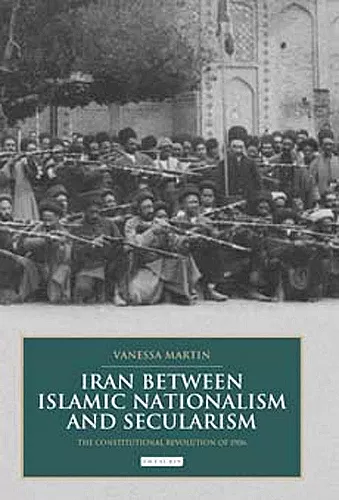Iran between Islamic Nationalism and Secularism
The Constitutional Revolution of 1906
Format:Hardback
Publisher:Bloomsbury Publishing PLC
Published:16th Sep '13
Currently unavailable, and unfortunately no date known when it will be back

With the ratification of a new constitution in December 1906, Iran embarked on a great movement of systemic and institutional change which, along with the introduction of new ideas, was to be one of the most abiding legacies of the first Iranian revolution - known as the Constitutional Revolution. This uprising was significant not only for introducing secular understandings of government, but also Islamic visions of what could constitute a national assembly. The events of the Constitutional Revolution in Tehran have been much discussed, but the provinces, despite their crucial role in the revolution, have received less attention. Here, Vanessa Martin seeks to redress this imbalance. She does so by firstly analysing the role of the Islamic debate in the late nineteenth and early twentieth centuries, and its relationship with secular ideas, and secondly by examining the ramifications of this debate in the main cities of Tabriz, Shiraz, Isfahan and Bushehr. When Muzaffar al-Din Shah came to power in 1896, on the assassination of his father Nasr al-Din Shah, Iran was in the midst of social and political upheaval, which culminated in the creation for the first time in Iran's history of a constitution and a new majlis (consultative assembly). In this book, Martin looks in particular at the idea of modern Islamic government as it was conceptualized at the time; an idea which had been emerging for some time before the revolution, having its origins in the vision of the reformist pan-Islamist, Jamal al-Din al-Afghani. She therefore traces the evolution of the debate around whether Iran was to be a secular or an Islamic society, or a combination of the two, together with the implications of this discourse in terms of popular perception and public opinion. By looking at the revolution outside of Tehran, she highlights the intra-elite rivalries, and the Islamic response to the Constitutional Revolution, from the moderate views of Thiqat al-Islam to the emergence of Islamic organizations and militancy. It is through this examination of Iran's major provincial cities that Martin concludes that in each region, the Constitutional Revolution took on a character of its own. From an exploration of the elites of Shiraz, including the effective mayor, Qavam al-Mulk, to the power centre of the then governor of Isfahan, Prince...
'Iran between Islamic Nationalism and Secularism offers an excellent survey of Iran's Constitutional Revolution and its ideological complexities. It sheds new light on the interplay of religion and politics within specific regional contexts and provincial centers. An outstanding contribution to the study of late Qatar Iran.' - Ali Gheissari, Adjunct Professor, Department of History, University of San Diego
ISBN: 9781780766638
Dimensions: unknown
Weight: 633g
288 pages